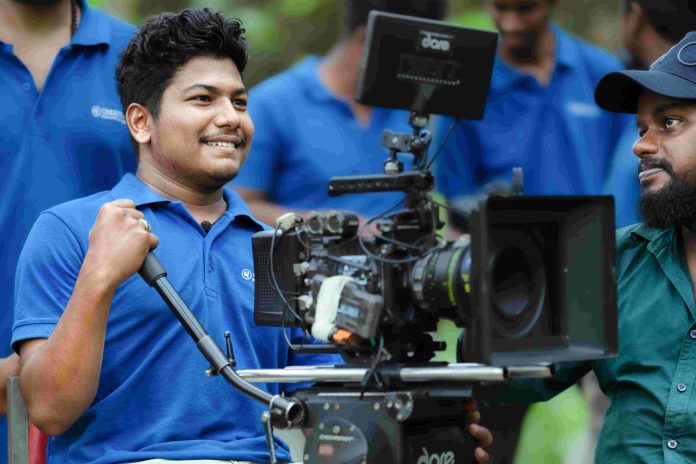Every person in the world has the right to know and get information. Photojournalism is one of the mediums to fulfill that right for information. It is an all-time active field. In fact, many photographers become a photojournalist in their later career. Photojournalism is one of the strongest as well as an essential genre in photography. This ultimate guide will help you to know more about Photojournalism as a career option. And also, photojournalism courses and colleges, jobs and salaries for photojournalists, and many more. On the whole, it would be a fantastic experience.
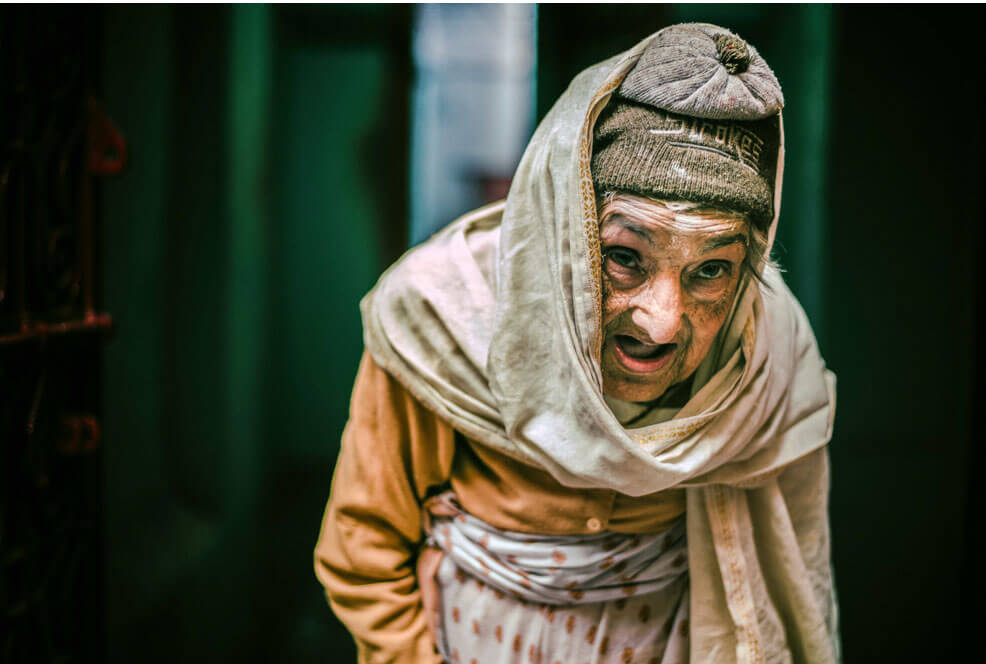
What is Photojournalism?
Photojournalism is the process of telling a visual story within the journalistic standards; by using photographs as well as the writings as the main tool. Photojournalism is a beautiful combination of Journalism and Photography. Particularly, in Photography, the strongest tool for communication is the Photographs themselves. Whereas, in journalism, it is the words that rule the field. Hence, Photojournalism is a form of Journalism balanced with Photography.
Photography + Journalism = Photojournalism
Note : The term Photojournalism made up of two words that are ‘photography’ and ‘journalism’. It was coined in the 1940s, by the dean of the University of Missouri, School of Journalism, Frances Luther Mott.
The term Photojournalism made up of two words that are ‘photography’ and ‘journalism’. It was coined in the 1940s, by the dean of the University of Missouri, School of Journalism, Frances Luther Mott.
It is used to provide knowledge, information, awareness, and idea to the people. Altogether it makes a strong impact on society. Journalism is a responsible occupation concerned with the collection of data, and information. It might be about the event, and happenings, with relevant proofs and resources, write, edit and present the same. Therefore, What is Photography? we have elaborated this in our article an Ultimate Guide to Photography.
Journalism and Photojournalism share Common Principles in terms of news stories. It’s to maintain the news story with full Accuracy, Newsworthy, Timeliness, and Trustworthy.
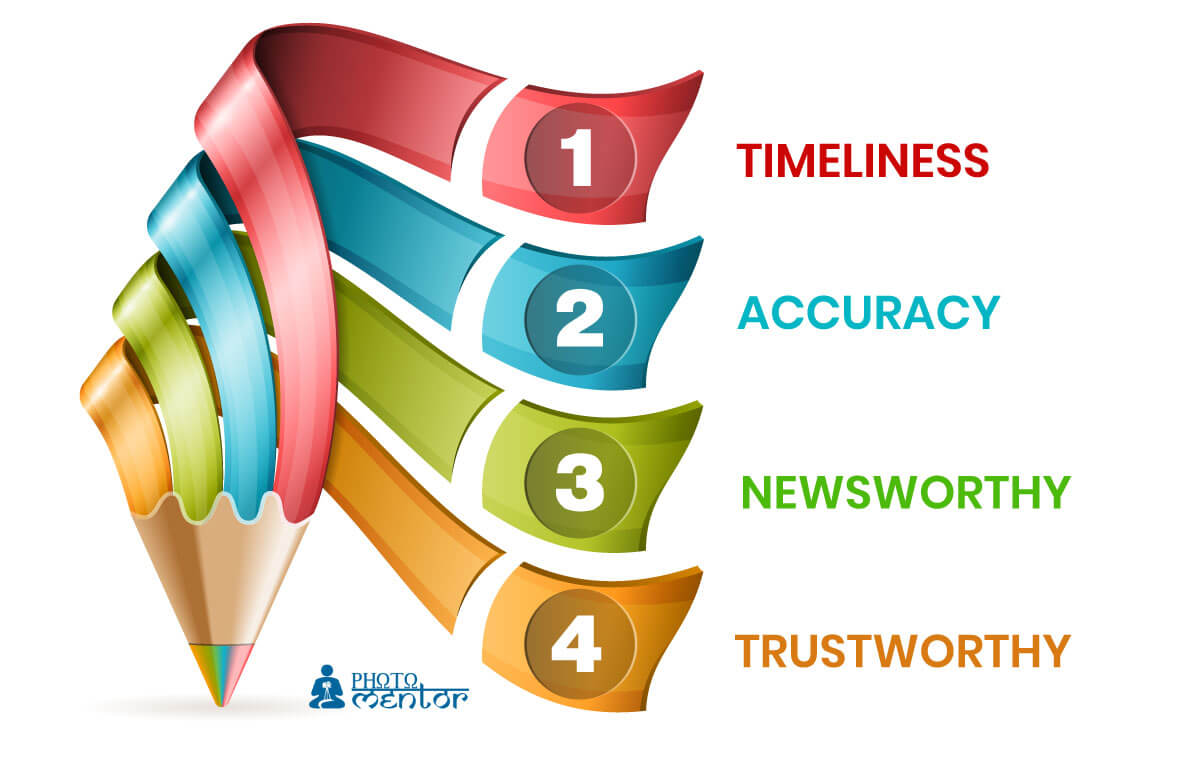
Photojournalism, on the other hand, is a particular form of journalism that includes the collecting of data and information, capturing photos, editing, writing, and presenting the same in the form of a news story for publication or broadcast. It includes all the above types, namely Journalism, Street Photography, and Documentary Photography. And hence, a Photojournalist is responsible for photos, editing, and writing in this case. With the utmost Accuracy, Timeliness, Newsworthy, and Trustworthy.
Scope of Photojournalism
The main objective of photojournalism is to tell a news story usually intended to be conveyed through photos and its write-up. For example, the broadcasting media, telecasting media, and the online digital media are all relied on the form of photojournalism, without which the media houses are incomplete. And in fact, won’t be able to function at all.
Therefore, the field of Photojournalism deals with the most crucial issues, current facts, and even the day-to-day events and happenings. Although the field of photojournalism is more concerned with photos or still images, with the growing technology, the scope has increased further. It has now paved the way to the field of Videojournalism. Where the moving images or videos are considered the main footage for news stories. The best example of this is the Television news channels and news on online websites.
Without any doubts, one can analyze that in the coming future, the opportunities in the field of photojournalism will be in greater demand. In the digital world, where every session of society is more interested in visual representations, how can reporting, and media be behind? Here, are few areas where photojournalism will always flourish in the future too.
- Telecasting Media – like Television Channels
- Printing Media – like Newspapers and Magazines
- Online Media – like Websites and Blogs
- Social Media – like Youtube and Facebook
Types of Photojournalism
The main purpose of photojournalism is to communicate to the larger audience with the most accurate, latest, and trustworthy news story. Media photography is the concept behind photojournalism. No matter, the news story is reported or presented on television, online website, newspaper, or magazine; the type of photography in Photojournalism is more concerned with Media photography.
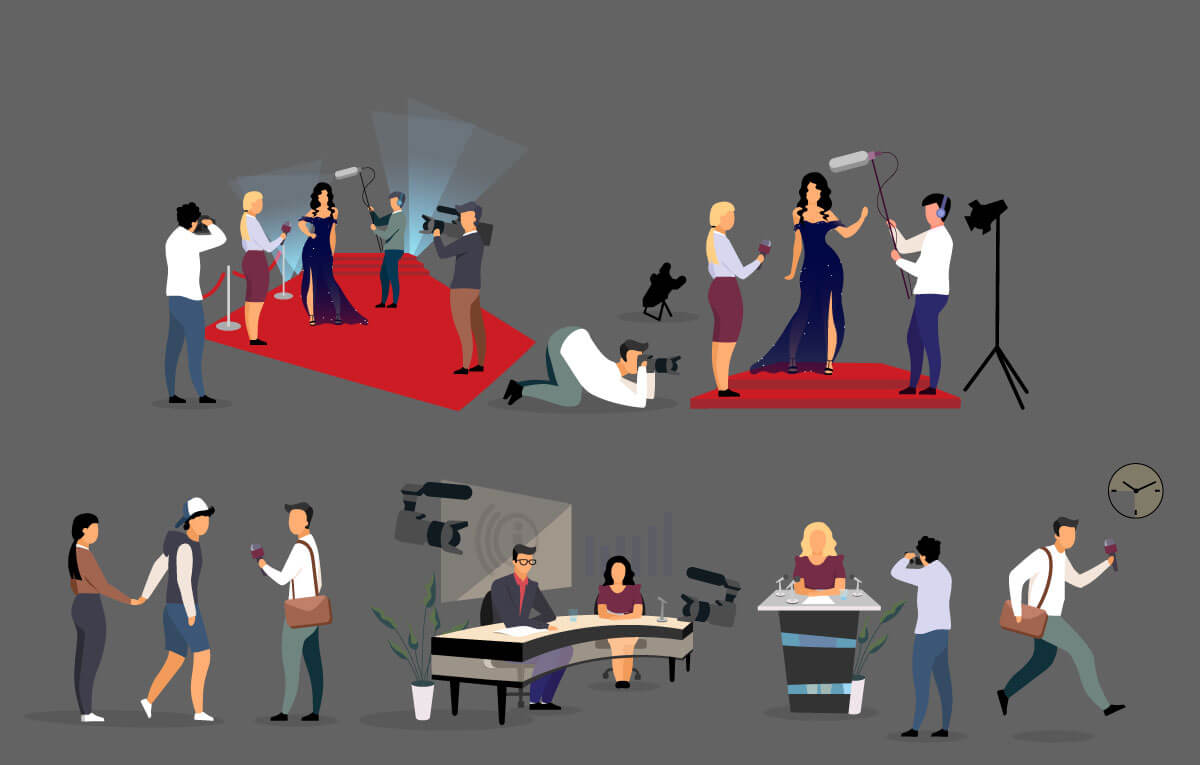
Well, there arises so many confusions and doubts regarding this field. For instance, Is photography and photojournalism one and the same thing? Photojournalism, Documentary Photography, Street Photography, etc… are these all the same? Let’s have a quick understanding of each one of these and find out how they are similar and at the same time differ from each other.
Documentary Photography
Documentary Photography is a genre of Photography that usually aims at documenting the real fact, situations and issues in the society with the help of photographs. The collection of photos of a particular place, people, situation or issues are presented in a storytelling form to give the complete news story.
Documentary Photography gets closer to people in the way, that it is all about the story about them and they tell. The purpose of this genre is to show informative stories and bring forward the issues and facts through a series of images, mostly accompanied by written text. Moreover, one of the key factors of Social Documentary Photography is honesty and trust.
Social Documentary Photography usually, follows a more long-term project, in terms to execute the news story completely. In such a type of photojournalism, subjects usually know that they are being photographed and are part of the news story. While Photojournalism also deals with Candid Photography, where the subject is not aware that he or she is being photographed.
Street Photography
Street Photography is a form of photography involved with the capturing of images of the people in the streets, places, real situations, and their lives. Here, writing is not an important part to be covered by the street photographer himself.
Although Street Photography is not always really a subcategory of Journalism, it is still considered one of its types. Since, when a photojournalist is on a location such as street to cover some of the important footage, he or she is into capturing the street photographs to complete the news story. It may include photographs of architecture, place, people, and events in a particular street.
The purpose of Street photography and Documentary Photography is to capture candid moments of reality. One principle is to never alter a scene, image, or make it unnatural. Because that would violate the ethics of photojournalism.
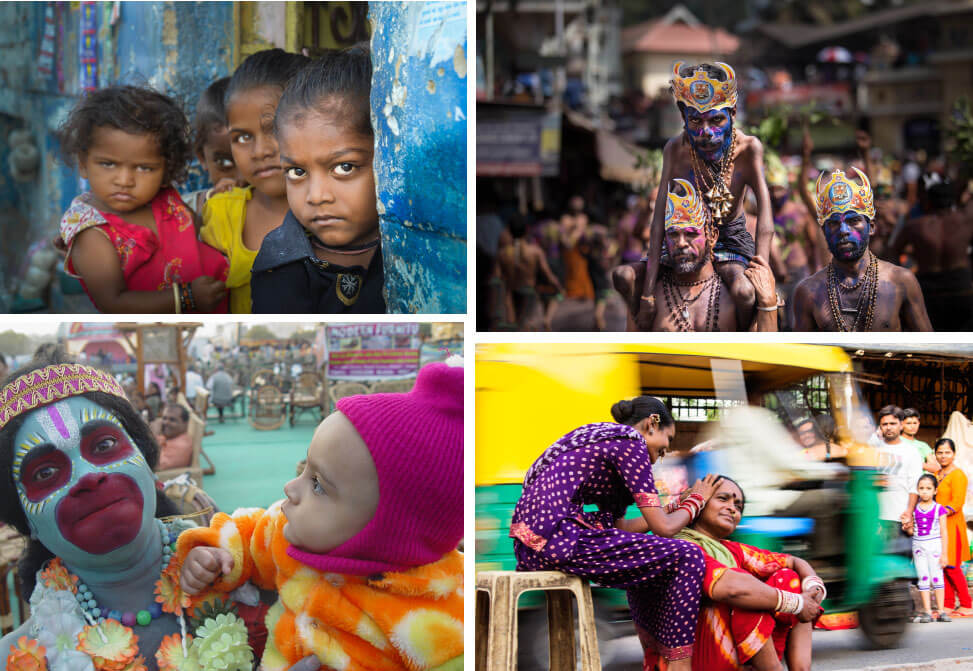
Celebrity Photography
One of the most liked types of Photojournalism is the Celebrity Photography. It includes the coverage of events, happenings, and day to day stuffs related to celebrities. Such as movie releases, reviews, film personalities, sports, sports celebrities, politicians, artists, etc… This type of photography is most of the time taken purposefully and with the knowledge of the subject. While photojournalists also make sometimes wise decisions to capture the candid shots of the celebrities and the event to make it more interesting and convincing.
Major Forms of Photojournalism
The main purpose of photojournalism is to show the reality to the society, create awareness, and update with the latest happenings of the world. In order to make the viewers understand the news story and bring a thought in them, various forms are applied. Let’s see the five major forms of photojournalism.
- Single Photo
- Photo Story
- Photo Sequence
- Photo Article
- Photo Essay
- Photo Novel
Depending upon the medium of communication and reporting, photojournalists follow one of the above forms of Photojournalism. Most of the news stories, in the newspaper, follow a single picture form of photojournalism. Here, a single image with caption, cutline, along with the title and short paragraph is provided. Whereas in Photo sequence and photo story, a number of photos are used. On the other hand, a photo article is a form of a photo essay or photo experience of reporting with equal importance given to both photos and writings. Finally, the photo novel is the form of narrating the story in the form of the novel such as with dialogues, bubble messages, etc…
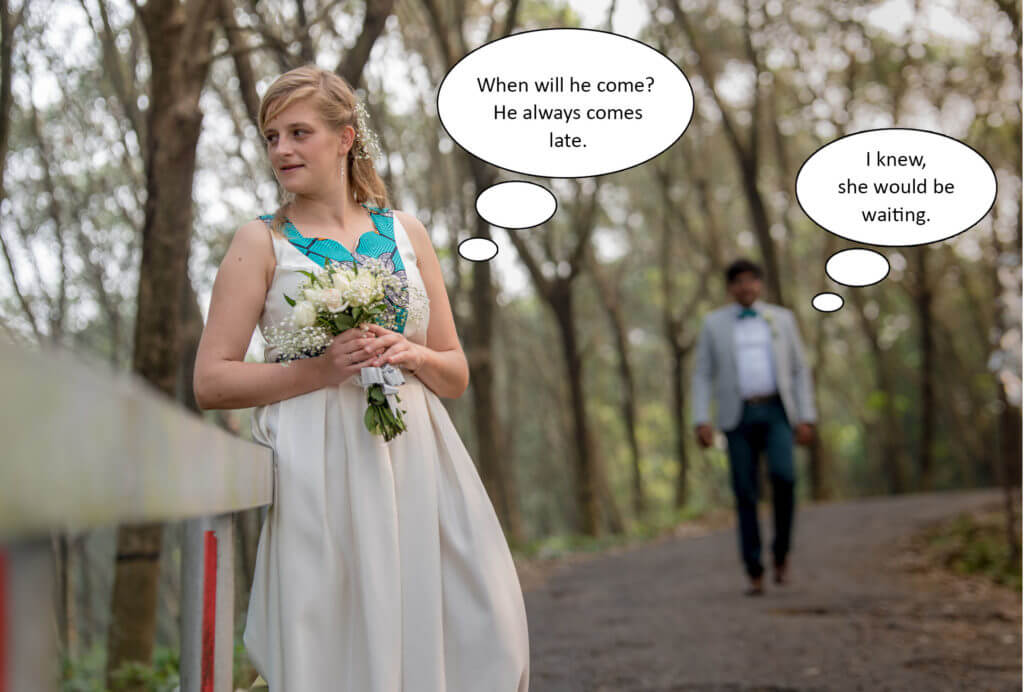
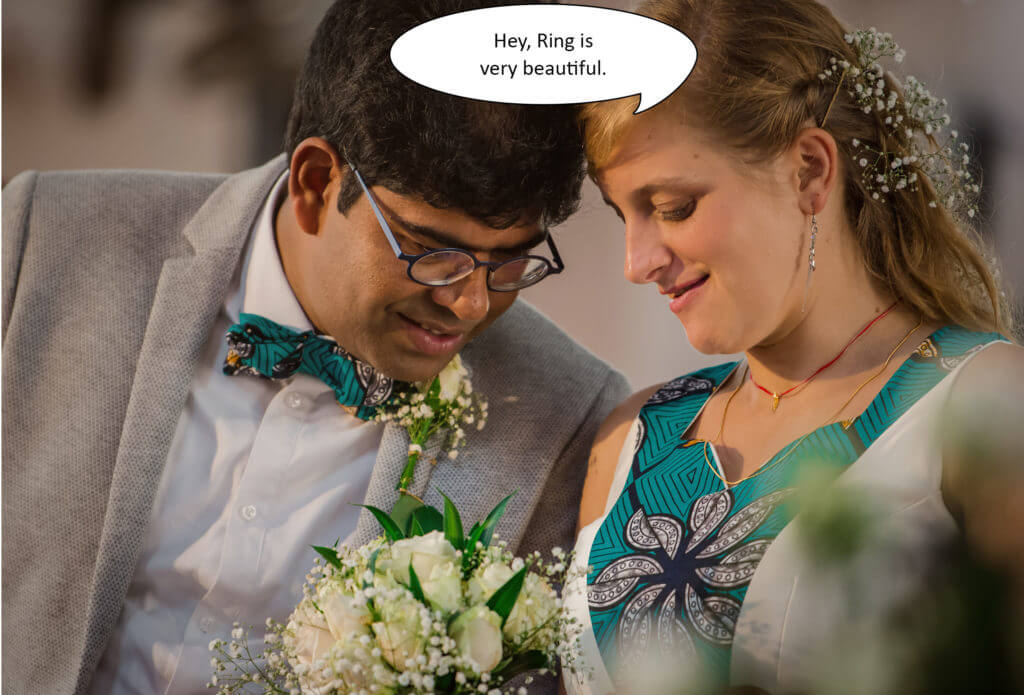
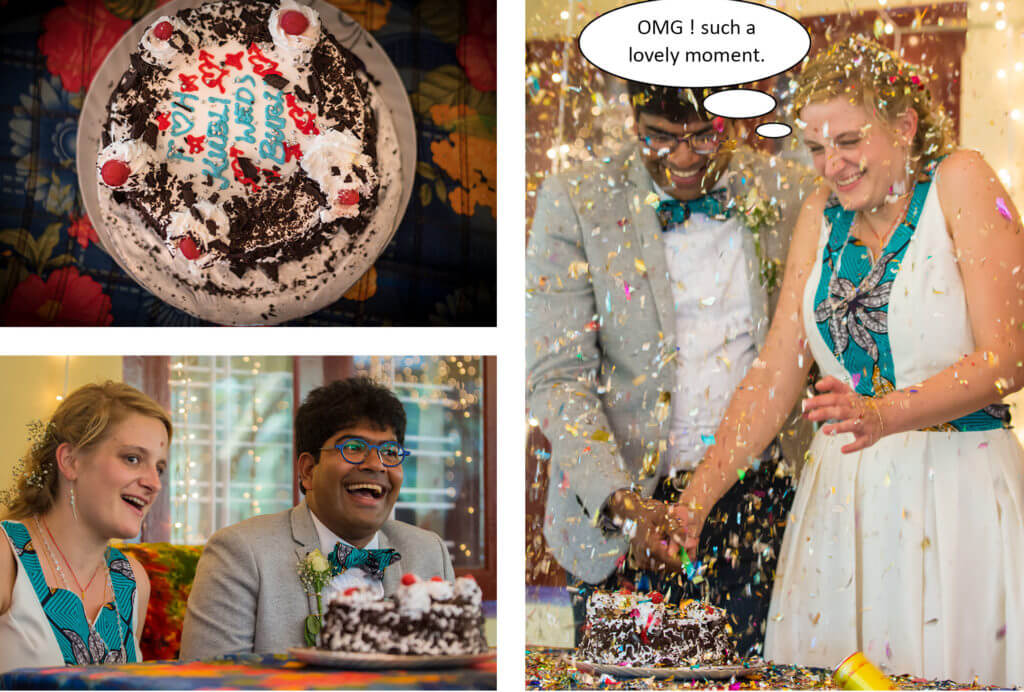
Photojournalism Code of Ethics
The Categorical Imperative: Photojournalists must follow the nondiscrimination clause and treat all as equal without any discrimination. What is acceptable for a single person should be acceptable for everyone, almost like a theoretical “nondiscrimination clause.”
Utilitarianism: It is a philosophy that attempts to weigh the positives and negatives of a situation, and maximize the good for the greatest number of people.
The Golden Rule: As an ethical philosophy it requires that a photographer or editor treat his subjects as he would treat himself. This, ofcourse, leaves decisions subject to the photographer’s, editor’s, or institution’s ethics.
Hedonism: It represents the “do what feels good” way of thought, and might be used to justify printing explicit photos simply because they are titillating.
The Veil of Ignorance: The Veil of Ignorance asks the photographer or editor to consider how they would feel if they were the subject. If they would not feel good in the subject’s place, it would be better to look for a different image.
The Golden Mean: The Golden Mean philosophy concerns compromise. If there is a less intrusive, offensive, or disagreeable photo that still tells the story, that is the better option. The emphasis is on finding a middle ground rather than an all-or-nothing approach.
- The news story comes in priority with complete credibility. Hence, Accuracy in content, text, photographs, videographs, and any other representation of their subjects should be there.
- A news story must be newsworthy. There must be something important to be called as news.
- Photographers should also treat all subjects with respect and hence their images should not be used in the wrong manner.
- In a situation in which someone needs assistance and help as no one else is present there, then the photographers or photojournalists themselves have the responsibility of doing so.
- In all other situations, photographers must strive not to influence events they are photographing.
- Photographers should also follow the norms, rules, and laws of the estate, Nation, and respective regions.
- Understand what is to be considered for private and public and accordingly take the permissions before coverage.
- Minor changes to the photographs are allowed, as long as they do not alter the meaning of the photograph. While digital manipulation of the photographs or any other factors are not allowed in a way that alters their meaning itself. The acceptable corrections may include dodging and burning, global color correction, contrast control, and cropping.
- If a photograph is edited beyond the minor changes mentioned earlier, there must be a valid reason discussed with the editor-in-chief, and the photograph must be accompanied by a clear, large disclaimer.
- If a photograph meets ethical guidelines but presents an issue of taste, the decision of whether to publish the photograph should be based on whether the concerned party needs to see the photograph to receive an accurate portrayal of the subject. On the other hand, if any other photograph could present the same information offending readers’ taste, then that alternative photograph should be used.
History of Photojournalism
The thirst to know and get aware of the happenings in one’s region, Nation and around the World, lead to the field of Journalism long back. Photojournalism, on the other hand, is in no doubt the next level of Journalism, where visual presentation became necessary. The photographs captured, for the news got proclaimed, and found importance in the news stories.
During the period from 1930s to 1970s, where new technologies were rising and developing, the field of Photojournalism is said to have its “Golden Age”.
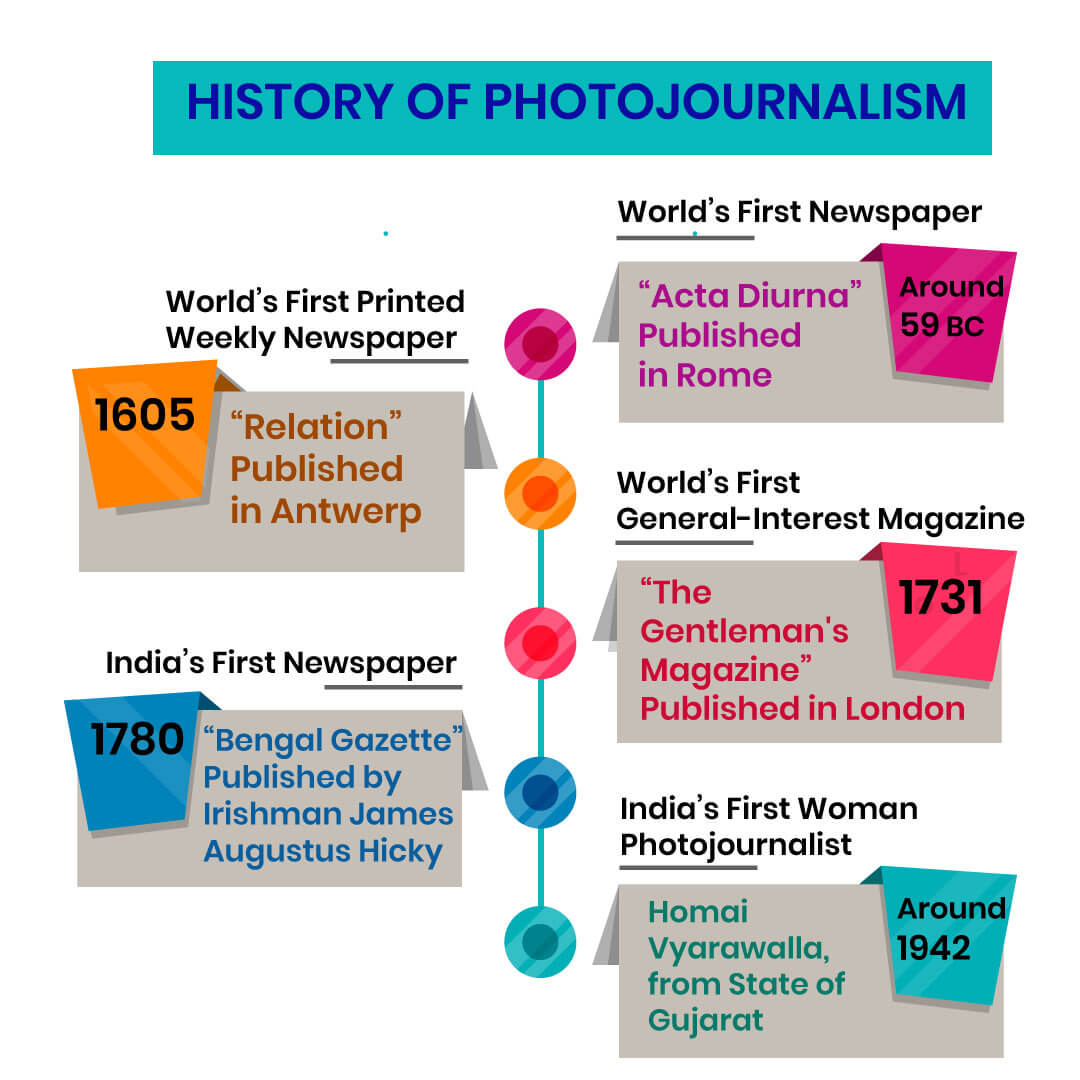
The history of Photojournalism has got its importance since war photography. The very first photograph for the news is considered to be taken in 1847. It depicted a man that had been arrested in France. In 1854 at the start of the Crimean War, the first official attempts at war photography were made by the British government. Furthermore, during the American Civil War in 1861, war photography or say news photography paved the way for further development of Photojournalism as a profession.
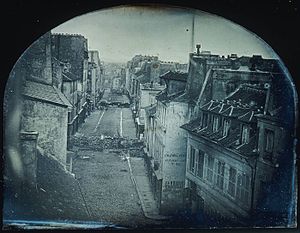
The first photograph to be used in the illustration of a newspaper story was a depiction of barricades in Paris. It was taken during the June Days uprising on 25 June 1848. The photo was published as an engraving in L’Illustration of 1–8 July 1848.
1855 – The First Photojournalism Series
During the Crimean War in 1855, the British Government hired the photographer Roger Fenton to document the war.
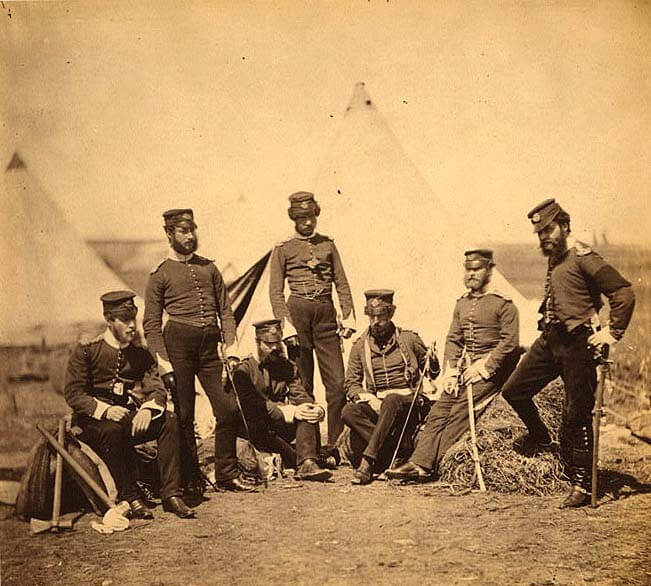
1861 – 1865 American Civil War
Portray a positive view of the war from a British perspective, the American Civil War.
1870 – Street Life in London – John Thomson
In collaboration with Adolphe Smith, he created the first Social Documentary Project and laid a foundation of journalism, where the work of writers and photographers goes hand in hand.
“How The Other Half Lives” in 1890
Best Photojournalism Photographs
There are millions of photographs that have paved the way for lots of changes in the world. “The interesting fact is that even a single image has the power to change the world. Photographs in photojournalism make us think, analyze, act, and react.” Hence, some of the prominent photographs in photojournalism that had a remarkable impact in the society are as follows.
“The Falling Soldier” by Robert Capa in 1936
The original title of this photograph is, Loyalist Militiaman at the Moment of Death, Cerro Muriano.
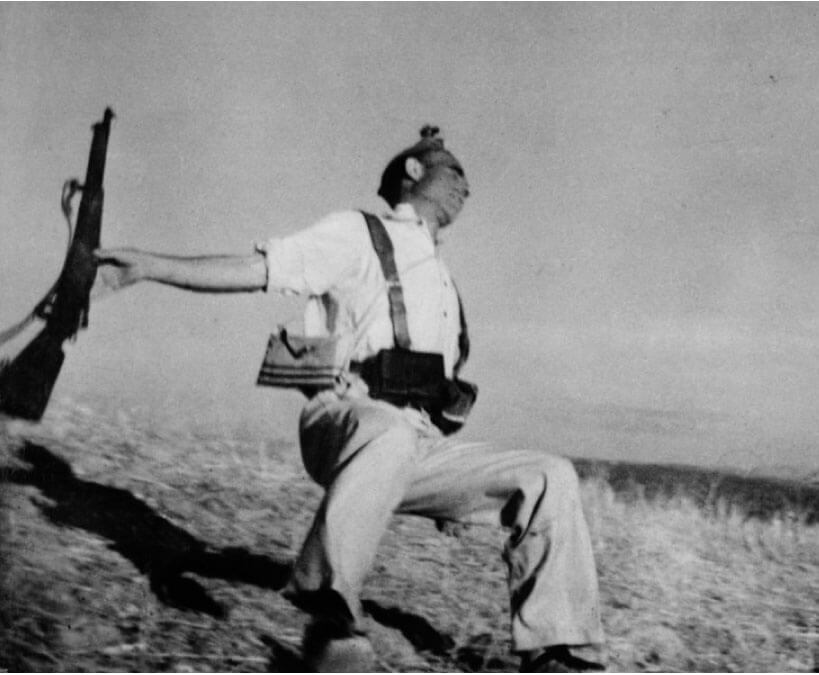
The photo is of a Republican soldier at the very moment of his death during the Battle of Cerro Muriano in the Spanish Civil War.
Although this photograph was acclaimed and considered as one of the greatest ever taken, both the photo and the photographer Robert Capa had to face significant doubts about its authenticity, identity of the subject and so on.
“Migrant Mother” by Dorothea Lange in 1936
Dorothea Lange was one of the most famous female photographers. She captured the photographs in the US Government’s Farm Security Administration Program, in 1936.
This image known as “Migrant Mother“, (Migrant Mother, Nipomo, California) is a symbol of the plight of migrant farm workers during that Great Depression. It became the iconic photo of the Depression, and one of the most familiar images of the 20th century.
Dorothea Lange’s photographs brought her a remarkable position in the history of photojournalism.
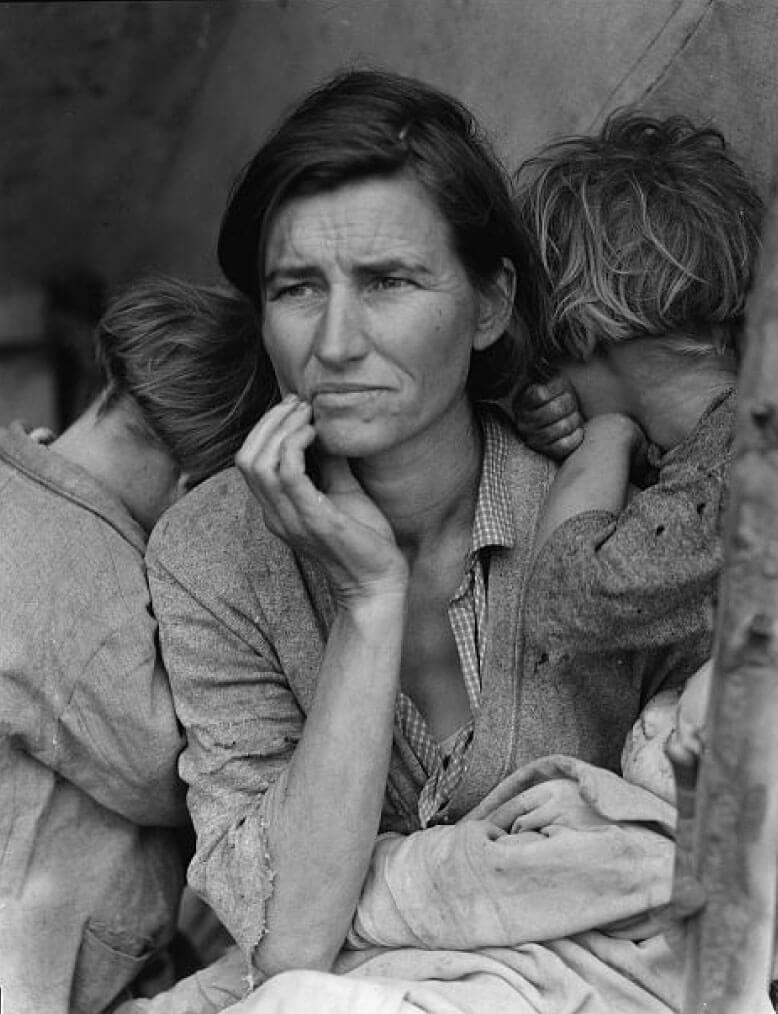
Republic Day Parade by Homai Vyarawalla in 1951
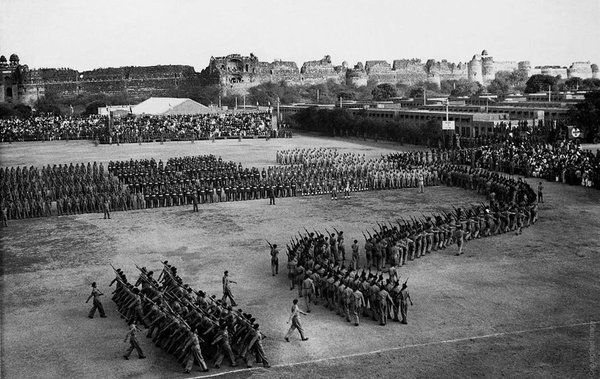
India’s first woman photojournalist Homai Vyarawalla, is best known for documenting the country’s transition from a British colony to a newly independent nation. She began work in the late 1930s and retired in the early 1970s. In 2011, she was awarded Padma Vibhushan, the second highest civilian award of the Republic of India
“Napalm Girl” by Nick Ut in 1972
Associated Press photographer Nick Ut’s photograph of Kim phuc running naked amid other fleeing villagers, South Vietnamese soldiers, and press photographers became one of the most haunting images of the Vietnam War. It later earned a Pulitzer Prize and was chosen as the World Press Photo of the Year for 1973.
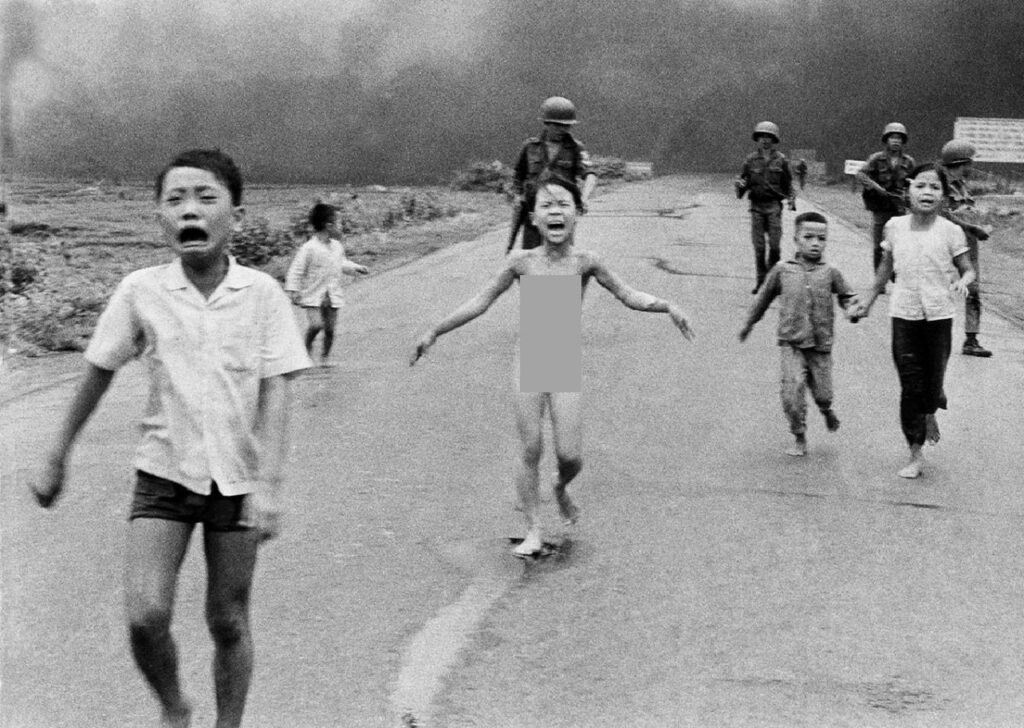
“Bhopal Gas Tragedy” by Raghu Rai in 1984
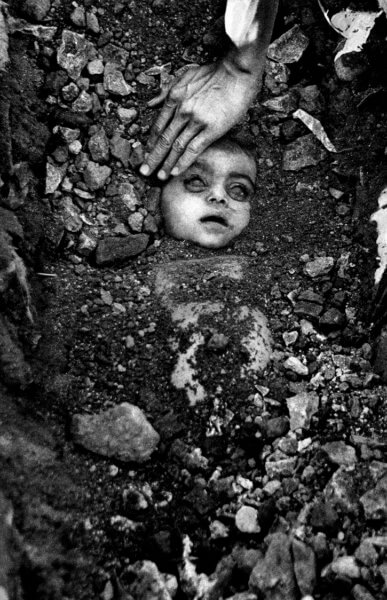
The tragedy of Union Carbide India Limited’s Pesticide Factory occurred in Bhopal during the night hours of 2nd December 1984, is considered as the World’s Worst Industrial Disaster.
This photograph during the gas leak in Bhopal factory in India was captured by the photographer and Photojournalist Raghu Rai in the year 1984.
He had captured various images of the Bhopal Disaster. Amongst those, one of the very known and heart-touching images is the photo given beside here.
.
“Afghan Girl” by Steve McCurry in 1984
The image “Afghan Girl” portrayed an adolescent girl named Sharbat Gula in a red headscarf with green eyes and an intense look.
This photograph taken by photojournalist Steve McCurry was published as the cover photo in National Geographic Magazine in June 1985.
The identity of the subject was not initially known until 2002. Later, in the April 2002 issue, Sharbat Gula was featured as part of a cover story on her life in National Geographic.
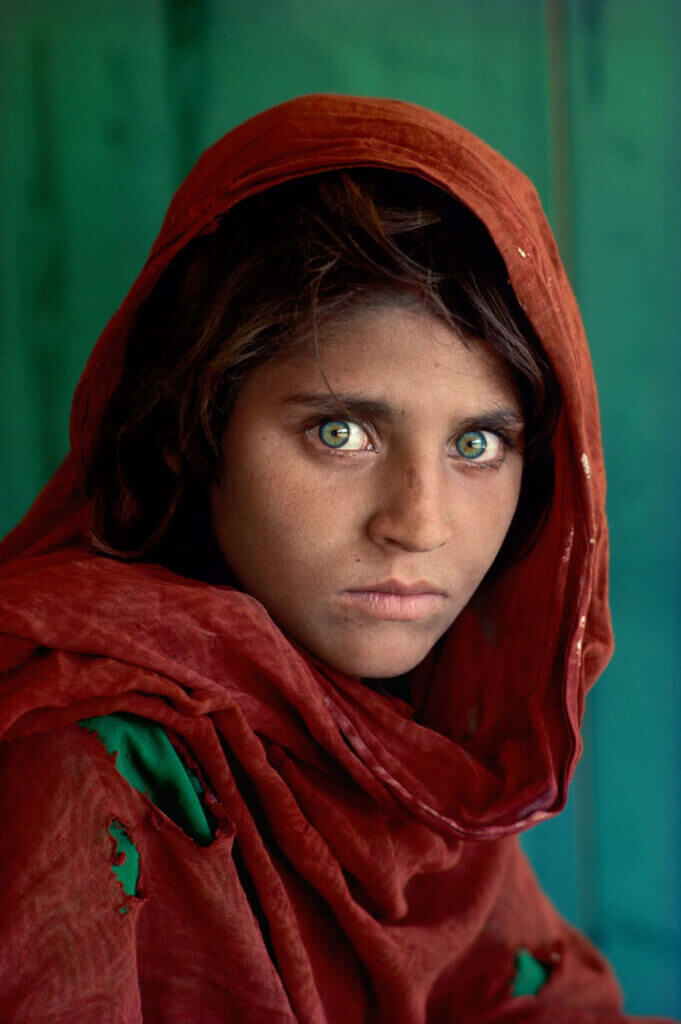
“The vulture and the little girl” by Kevin Carter in 1993
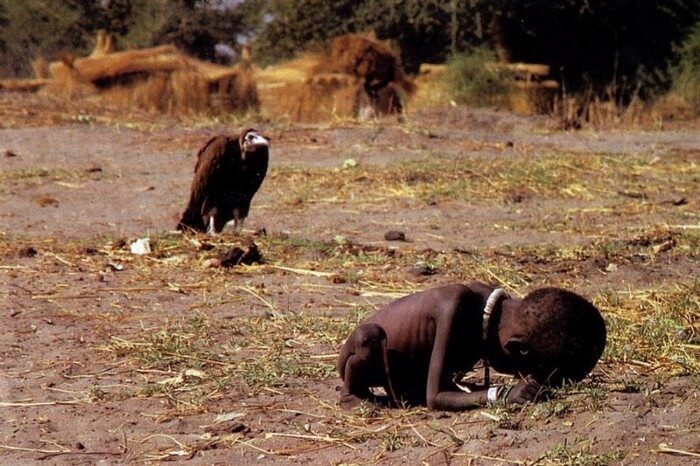
On 26th March 1993, this photograph known as “The vulture and the little girl” was first appeared in the New York Times.
It depicted the storyline of famine, where a vulture was sitting close to a thin, small child sitting on her knees seeking for food.
This image is also known as “The Struggling Girl“.
Earlier, the child was considered to be a girl. And hence the image had the caption – The Vulture and the Girl. But, later it was known that the child was a boy. Further, this image became the symbol of famine.
“Death of Alan Kurdi” by Nilufer Demir in 2015
One of the heartfelt images called “Death of Alan Kurdi” is a photograph portraying a three-year-old Syrian boy of Kurdish ethnic background who drowned in the Mediterranean Sea on September 2, 2015.
This particular image was captured by the Turkish photojournalist and photographer Nilufer Demir.
The boy and his family were refugees and came to be known to the world through this photograph. Moreover, this particular image prompted a few international reactions to the European refugee crisis.
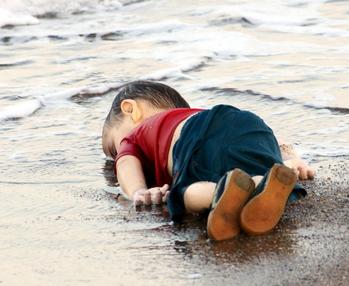
Who is a Photojournalist?
The Photojournalist is the one who plays the role of photographer, reporter, editor, and journalist. They are the one who uses a camera instead of written words to tell a news story. The Photojournalist is the one who witnesses the events, captures them, and makes the world know about them with a visual representation. The Photojournalist is the one who can interpret and communicate any event through photographs. No matter how drastic, sorrowful, or crucial a new story it is. Photojournalists are capable of conveying it in the most appropriate form to the viewers.
It is not that every photojournalist adopts a different and unique way of approach in the field. But the most known and experienced photojournalists follow a unique style of work and maintain a different identity.
Role of a Photojournalist
As human beings, Photojournalists should follow the same ethics as everyone else. From my perspective this means, doing everything reasonably possible to help people in direct suffering. As for the nature of Photojournalism, this leads to a lot of discrepancies since the characteristics of documentary photography mean that photographers find themselves more often than not in areas of conflict that challenge the ethics of photojournalism.
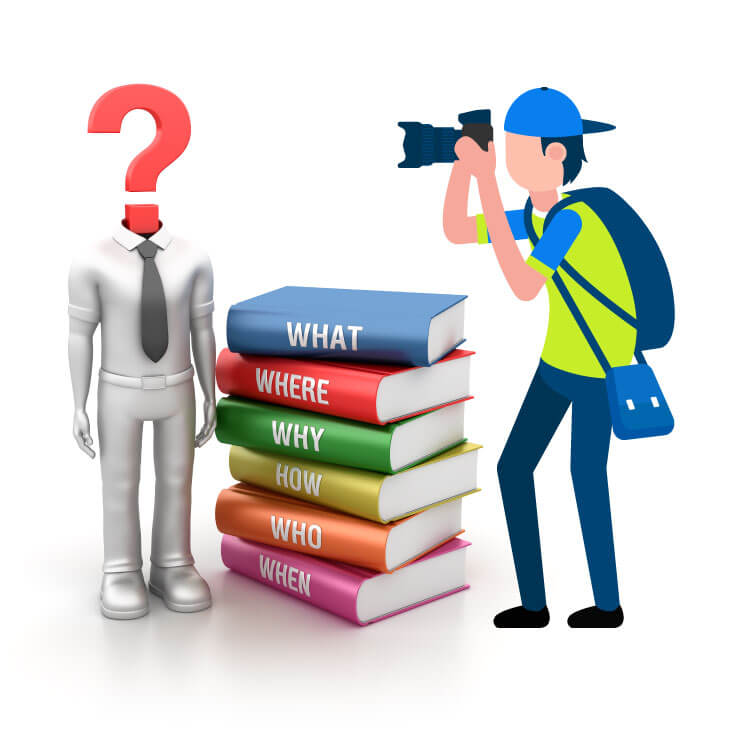
The major role of a Photojournalist is to find relevant answers for 5W’s and 1H for any news story.
Moreover, these are the factors that make the News story a matter of News.
What happened? Where and When did it happen? Who did it? Why did it happen? How it all occurred?
Hence, a photojournalist work in order to find all necessary information, and in the collection of all the answers to the 5W and 1H, the news becomes complete. In addition to this, the capturing of appropriate images, adding the caption, and cutline is also a part of the Photojournalist’s role.
Best Photojournalist
It is not easy to make a career in Photojournalism but it is not impossible. You need to desperately work hard and offer sincerity in the job. Let’s know some of the prominent and best photojournalists around the world.
- Alfred Eisenstaedt (1898-1995)
- Henri-Cartier Bresson (1908-2004)
- Robert Capa (1913-1954)
- W. Eugene Smith (1918-1978)
- Margaret Bourke-White (1904-1971)
- Dorothea Lange (1895-1965)
- Homai Vyarawalla (1913 -2012)
- Nikos Economopoulos
- Jim Goldberg
- Steve McCurry
- Matt Black
- Andrea Hernández
How do I become a Professional Photojournalist?
In order to become a Photojournalist, you have to make yourself prepared to convey the emotions present in it. If this is your passion, you can get it started. To become a Professional Photojournalist, here are some recommended things required.
- Acquire Formal Education
- Acquire Basic Knowledge in Photography
- Select Proper Camera Gears
- Acquire editing knowledge
- Learn to give apt Captions and Cutlines for the images
- Built your Own Portfolio
- Be always aware of Current Affairs
- Follow Photojournalism Ethics
- Be ready to travel anywhere and handle the situation
- Should Improve Observation, Punctuality, Patience and Hard work
- Start working for local media houses and build up the experience
- Apply to the bigger Companies and Media houses
Hence, to become a Photojournalist acquire Basic Knowledge in Photography with an understanding of the camera techniques and photography knowledge. A course in Photojournalism will make one apt with all necessary qualifications in becoming a photojournalist.
Select Proper Camera and Gears and be upgraded with the high modernized and digital world. Selecting a proper camera, lenses, and equipment will be helpful in establishing a whole story from a different perspective. Along with that, practice in adding the most appropriate captions and cutlines.
It is necessary to be Aware of Current Affairs, news, and events happening around you and in the society. In fact, one should know how and which one to select as proper news to make it as newsworthy.
A Photojournalist should follow every photojournalism ethics in every situation. Also, should be aware of the ethical and moral values of the news. Observation, Punctuality, Patience, and hard work are unavoidable facts. As ones, patience is completely necessary because it is the basic eligibility for a photographer. Your hard work is your reward for your success.
Create a Portfolio which is a compelling thing to have if you want to be a photojournalist. Capturing relevant photos as well as working for the newsworthy news story add a good impact in one’s portfolio.
The Skills required to become a Professional Photojournalist
A photojournalist needs to acquire some extra skills to provide a good visual story and make one’s professional career in Photojournalism.
- Basic knowledge of political, social, and economical topics
- Effective and amazing photography skills
- Knowledge on the current events
- Recognizing interesting stories
- Understanding the mood of the moment
- Ability to present facts clearly through meaningful pictures
- Must be comfortable and calm around people
- Videography and Video Editing
- Find the perfect subject in the photograph
- Knowledge of all available technology in this field
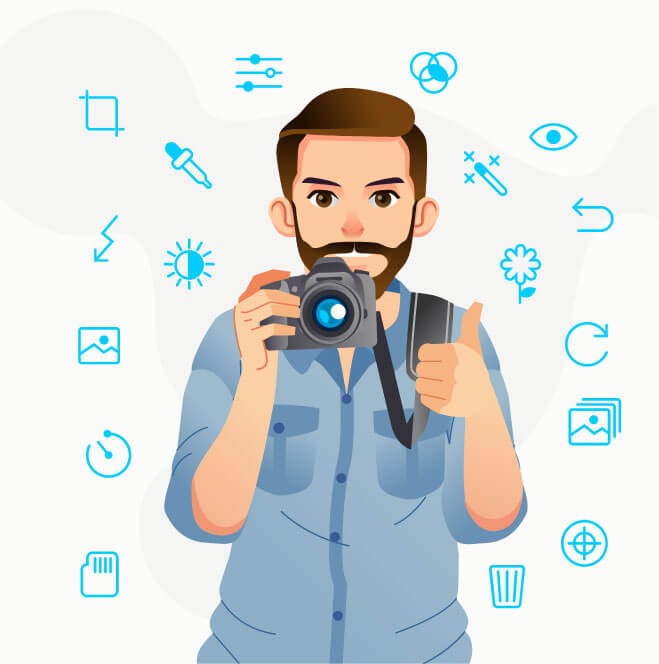
Photojournalism Courses
As discussed earlier, photojournalism needs good knowledge, education, skills, and experience to build up a good career in this field. Hence, it is always apt to opt for a course in photojournalism. There are various courses available based on different duration and course structures. Photojournalism education help to learn more regarding the complete photography education, techniques, ethics of photojournalism and it will give a complete practical idea regarding photojournalism.
Before selecting a Photojournalism course, one should know the importance of the photojournalism education and what to expect from any course.
What is Photojournalism Education?
Education plays a primary role in the field of photojournalism. It helps to know more information about society and the world. Further, it helps you to decide what should be conveyed to society. On the other hand, it mainly helps to understand various problems or events happening around us.
For a Photojournalist, information is wealth. To get proper education you have to choose a reputed institution or college or university in order to attain complete knowledge regarding camera, techniques, digital marketing, etc.
Courses Available for Photojournalism
There are degree courses available for three years or four years particularly for Photojournalism in many colleges. There are also many short courses for one year or two year available with different subcategories. If you are the person who is more concerned about society and trying to give your voice, definitely a degree course in Photojournalism will be more helpful. In case, if you are trying to know about photojournalism but are not able to spend time for a degree course then definitely one-year courses will be more helpful.
Best Photojournalism Colleges
Now after the selection of “what you need?”, now it is time to know “where your requirements will be fulfilled?”. Finding a perfect college or institution according to your needs is more important.
So before selecting a college or institute, you have to know more about the college, campus facility, syllabus, way of teaching, and many more. If you want to know, How to find the best college for Photojournalism or photography, then click here to know more. Find the list of Top 5 Photojournalism Colleges in the World.
- Royal Melbourne Institute of Technology, Melbourne, Australia
- Creative Hut Institute of Photography, Kerala, India
- California College of the Arts, California, United States
- Rochester Institute of Technology, Rochester, New York
- Udaan School of Photography, Mumbai, India
What are the Photojournalism Job Opportunities?
Photography is an art. Many people are so passionate about it. But some try to make it as their profession. Finding job opportunities in Photojournalism is neither a difficult nor an easy part. Since you know that there are opportunities but its not that easy to get into it.
Before finding a job in Photojournalism definitely you need to know various kinds of Photojournalism and its scope as a photojournalist. There are many platforms and roles available in the field of Photojournalism from which you can make a solid career. Let’s look into the kinds of journalism, were a Photojournalist can find a job.
Mainstream Photojournalism
- Broadsheet Daily Newspapers
- Magazines
- Tabloids
The opportunities available in Mainstream include jobs in the media houses that aim in the printed editions of the daily, weekly, fortnight, etc… There are general magazines as well as specialized magazines particular for automobiles, food, travel etc…, these cover news for a longer time and publish it with the whole content. Whereas, the Tabloid newspapers work on the sensational news, like the information from interviews of celebrities, statements made by them, the release of a movie, the latest technologies, newly released books, etc…
Area-Specific Photojournalism
- Fashion
- Celebrity
- Sports
- Environmental
- Business and Finance
- Tours and Travels
- Investigative
Comprises the reports and articles on fashion, the latest trend in the fashion market, models, interviews, and highlights of the latest fashion shows. Area-specific also includes the professional and personal lives of celebrities like movie stars, singers, musicians, and business tycoons. It also includes Environment-related issues, environmental events, policies held by environmental organizations for various causes. Sports events, sports series or a sportsperson, businesses, economy, finance, tours, and travels, etc… are few other types.
Online Photojournalism
- Online News
- Mobile News
Web photojournalism and mobile news are the recent trends in online Journalism or Photojournalism. Various social media, blogs, or any online news companies provide online news.
Photojournalist Jobs
Photojournalists can be employed by a media house or publication agency. However, many photojournalists also work as freelancers, like being employed by a newspaper but freelance on the side.
Here are some of the photojournalism careers one can explore:
Photojournalism Job Titles
- Director of Photography
- Photojournalist
- Newspaper Photographer
- Magazine Photographer
- Freelance Photojournalist
- Stock Photographer
- Graphic Artist
- Layout Editor
- Web Designer
- Video Editor
- Documentary Filmmaker
- Multimedia Journalist
- Multimedia Producer
- Picture or Image Editor
- Multimedia Editor
- Picture Researcher
- Visual Archivist
How to make Income in Photojournalism?
When we choose a profession either it may be of our passion towards it or the income, we get from it. So, without any income, we cannot able to survive in any profession. As a Photojournalist, there are many ways to get income. Mostly, you need to create your unique style and make a platform for yourself. If your work is capable of reaching the audience definitely you can earn from it. Since you are a photographer, you have a few options out there:
- Sell your photos on stock photography websites
- Sell prints of your photos
- Develop your online portfolio and market yourself to desired companies, magazines, and newspapers.
- Work as a Freelance Photojournalist for any media or newspaper or magazine.
- Work for NGOs, organizations, or any companies in any targeted field.
- Understand your audience and provide content based on it definitely, you can earn easily from it.
- Photography exhibitions, contests also will help to earn and also to establish your work to the next stage.
Salary for a Photojournalist
During the early stages of any job, one cannot expect a large amount of income. According to one’s hard work, excellence in work, patience, and dedication you can earn gradually. In India, Photojournalist works as a regular photographer to earn monthly income as well as a freelancer. So, during the early stage of the career one can earn from Rs. 7,000 to Rs. 20,000 on an average. And by becoming a senior Photojournalist there is a possibility to earn Rs. 30,000 to Rs, 50,000 or above. A freelance Photojournalist can earn an average of Rs. 4,000 to 12,000 per project.
Photojournalism Tips and Tricks
Like in any field, practice makes one perfect. It is true in the field of photojournalism too. Every new news coverage adds-on to the experience in one’s career. It enables one to work much better for the next, than ever before. Here, are a few tips and tricks one can follow to make a good photojournalism career.
- Good and relevant photos tell a story better than the text that comes with it. Thus, make sure to compose your image with the most appropriate subjects and elements. In order to tell a story, try to capture the images comprising :
- People with actions or emotions, i.e. facial or non-verbal expressions
- Elements such as something unusual or unnoticed by others
- Compose and experiment with different angles
- Apply your own unique and creative skills
- Make sure that your subject is always in focus
- Equipment and gears
- Carry a proper camera and gear with you at all times
- Maintain a basic camera setting so that you are ready to use it rapidly and any instant
- Avoid unnecessary equipment
- Use a comfortable bag to carry all the important equipment
- Carry other useful materials such as a notepad, pen, smartphone, charger, and laptop if needed
- Prepare a short note on what are you going to cover, and prepare yourself before the work or coverage
- Respect your subject, and always follow the Photojournalism ethics
- Try to find what exactly your audience wants, what exactly you want to convey, and concentrate on that
- Understand and follow the ethics of Photojournalism
- Work within deadlines, and be punctual both while you need to be in the location and after the shoot
- Don’t compromise and lose the reality and truth of the news
- Always, recheck and cross-check the data and information before its live or on-air
- Maintain good communication with everyone
Photojournalism Equipment and Accessories
- A Good Camera Body and Camera Bag
- Wide Angle Lens
- Prime Lens
- Tele Zoom Lens
- Microphone
- Flash and its accessories
- Travel Tripod
- Extra Memory card and Batteries
- Camera Cleaning kit
- Tablet or Smartphone
- Some of the Best Camera
- Nikon D810, D7200, D500
- Canon 5DMark IV, Canon 7D
- Sony A7iii, Alpha a68
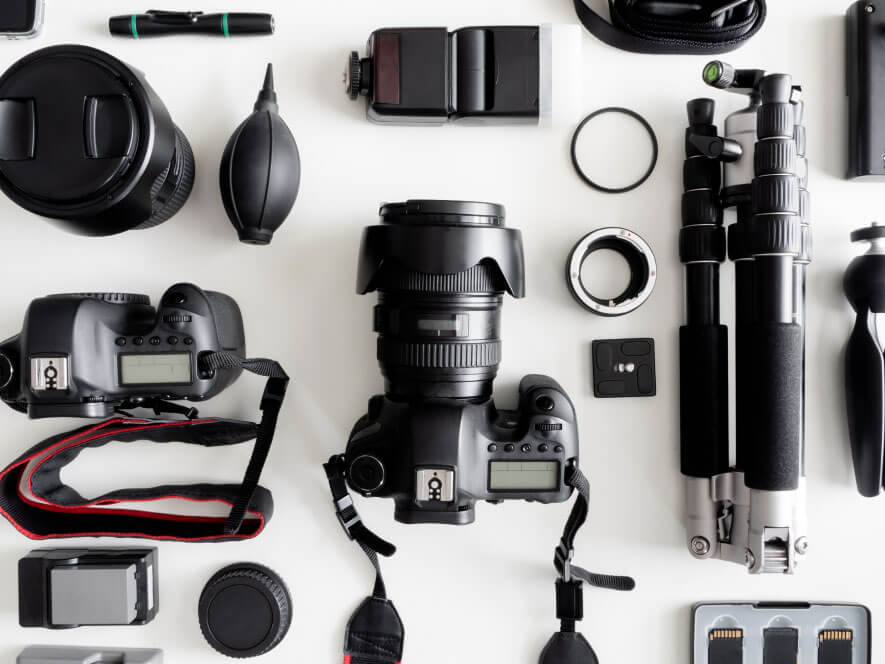
MAGNUM PHOTOS
The most influential photojournalism agency of the 20th century was founded in 1947. Based on the premise “Magnum is a community of thought, a shared human quality, a curiosity about what is going on in the world, a respect for what is going on and a desire to transcribe it visually.” The photographers Robert Capa, David Seymour, Henri Cartier-Bresson, George Rodger, and William Vandivert founded Magnum in Paris. A lot of photojournalists suffer because they don’t have the needed funds for their projects. Magnum gave them a new home and the possibility to market their works.
PULITZER PRIZE
The Pulitzer Prizes were established by the bequest of Joseph Pulitzer, which suggested four journalism awards, and were inaugurated beginning in 1917. By 1942 there were eight Pulitzers for journalism. For several years now there have been 14 including the two for photojournalism. Replaced by two photojournalism prizes in 1968: the Pulitzer Prize for Feature Photography and “Pulitzer Prize for Spot News Photography”, which was later renamed Pulitzer Prize for Breaking News Photography in 2000.
Modern Photojournalism
In today’s modern world, everything has gone digital. Thereupon, the trend of achieving the latest, fastest, and accurate is now the need and requirement in every field. In Photojournalism too, this is a true and an important fact. Hence, Photojournalists should be capable of capturing story-telling photographs, record videos, edit images and videos, etc… For no doubt, if one is good at all these works, then definitely his / her work will be easily recognized and appreciated.
One of the essential tools in Modern Photojournalism nowadays is the mobile phone or smartphone. Its use has helped the present photojournalists even any common citizen photojournalists to showcase any problem or issues quickly and reach the viewers faster than ever. On this note, modern photojournalism also includes the use of various social media.
This article on An ultimate guide to Photojournalism would have now given you a clear idea about it. The editorial team of Creative Huts has tried its maximum best to let you know, How to make a career in Photojournalism? What you need to do to become a photojournalist?, and many more. Be passionate, sincere, determined, punctual, do more hard work and have patience. Furthermore, use Photojournalism in the proper way to make your voice or support in whatever and wherever needed and stand for the people and nation.


